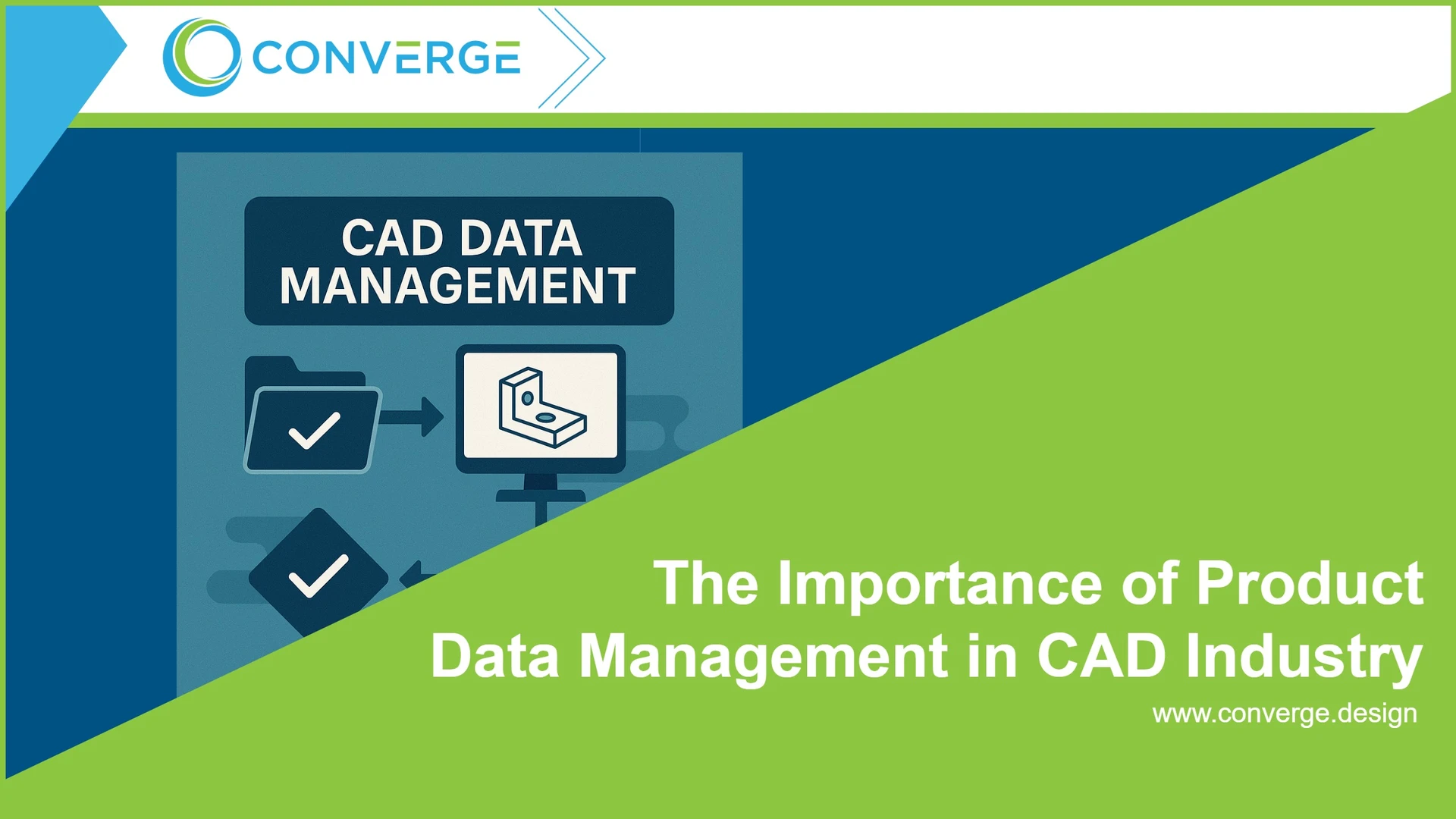In the high-stakes world of CAD design, managing design data efficiently is no longer a luxury—it’s a necessity. As engineering teams increasingly rely on digital workflows, Product Data Management (PDM) systems have become the backbone of collaborative, compliant, and scalable product development environments.
At Converge, we’ve seen firsthand how effective PDM transforms design workflows from chaotic to streamlined. But what exactly makes PDM so important to the CAD industry?
1. Version Control: Eliminating “Which File Is the Latest?”
One of the most common sources of friction in engineering teams is file confusion. Without PDM, files can be duplicated, modified simultaneously, or overwritten—leading to rework and costly mistakes. PDM introduces structured versioning and revision control, ensuring that only one version of a file is edited at a time, and previous versions are always recoverable.
For example, SOLIDWORKS PDM automatically tracks versions as users check files in and out, making it impossible for two designers to unknowingly edit the same file simultaneously.

3. Workflow Automation and Collaboration
PDM isn’t just about storing files—it’s about how those files move through your organization. SOLIDWORKS PDM Professional, for instance, allows you to define custom workflows for review, approval, and release stages. This ensures that no design gets manufactured without the right sign-offs, reducing errors and accelerating time to market.
Cloud-hosted PDM systems take it further by enabling globally distributed teams to collaborate in real time, without worrying about VPNs or server performance. Converge’s implementation for clients like Fossil Group and Moog Music proves how cloud PDM can unlock seamless cross-site collaboration.

5. Integration with Broader Business Systems
Modern PDM platforms integrate seamlessly with ERP, PLM, and MRP systems, allowing for better traceability across the entire product lifecycle. For example, SOLIDWORKS PDM Professional can be configured to push approved designs directly into ERP systems, aligning engineering with manufacturing and procurement.
At Converge, our Engineering Systems & Process Review (ESPR) service helps companies identify integration gaps and optimize their PDM environment accordingly.

2. Security and Compliance
Whether you’re in aerospace, medical devices, or consumer electronics, your design data is often sensitive and subject to strict regulations. A good PDM system provides permission-based access, audit trails, and data encryption—essential for compliance with standards like ISO 9001 or ITAR.
Converge leverages secure cloud hosting solutions, including SOC 2 and HIPAA-compliant infrastructure via EpiGrid, to ensure that data stays safe and accessible—anywhere, anytime.

4. Scalability and IT Efficiency
As your engineering team grows, the complexity of managing CAD data multiplies. Traditional file storage solutions quickly fall short, requiring constant IT intervention.
That’s why Converge offers Managed CAD Administration Services (MCAS), relieving engineering and IT teams from the burden of maintaining complex PDM systems. Our cloud-hosted vaults scale with your business needs while delivering significant ROI—up to 301% in smaller team scenarios.

Final Thoughts: Why PDM Is a Strategic Imperative
In today’s CAD-driven world, PDM is more than just a tool—it’s a strategic asset. It protects your IP, improves team productivity, streamlines compliance, and ultimately helps you deliver better products, faster.
Whether you're a startup scaling fast or an enterprise managing global design teams, the importance of Product Data Management cannot be overstated.
If you're ready to eliminate file chaos, empower your engineers, and future-proof your design infrastructure, let's talk about how Converge can help you get there.
Talk to an expert about SOLIDWORKS PDM today


